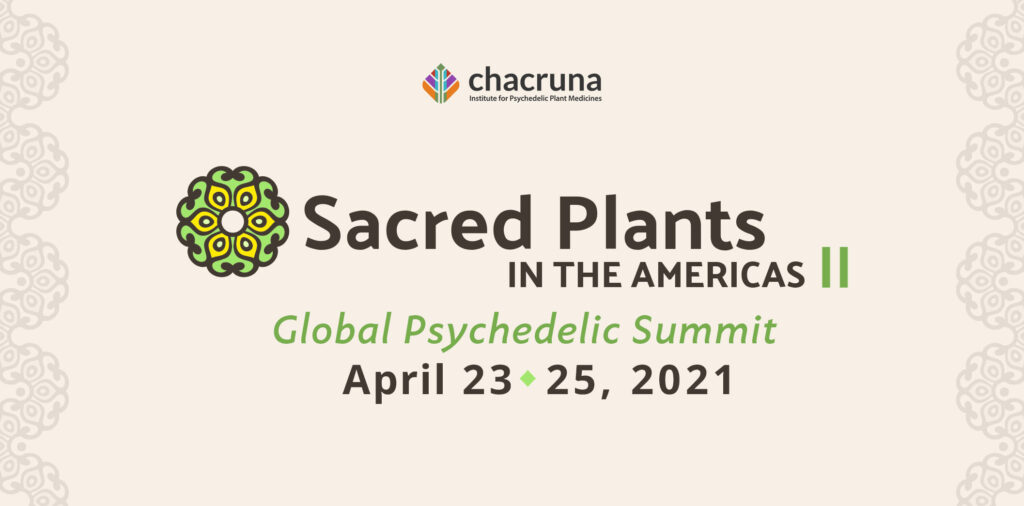- How Music Therapists Helped Build Psychedelic Therapy - December 9, 2020

By the late 1950s, music’s vital contribution to psychedelic therapy was well-established. A brief mention of music seems almost obligatory in a central strain of the literature. When discussing their methods in a 1961 article, however, the team at Hollywood Hospital in New Westminster, British Columbia, altered the formula. Instead of mentioning music per se, they write: “We think a group of four [therapists] is best. Generally this includes the psychiatrist (as therapist), a psychologist (cotherapist), a psychiatric nurse and a music therapist.”
In mentioning music therapy, the Hollywood team recognized the need for professional expertise regarding music’s therapeutic use. Itself in an early stage of professional development, tensions within the field of music therapy played out in competing approaches to selecting music in psychedelic therapy: Is it music’s emotional content or a patient’s familiarity with music that most reliably led to the desired outcome?
“Is it music’s emotional content or a patient’s familiarity with music that most reliably led to the desired outcome?”
In exploring these tensions, this post traces the contributions of music therapists at three research sites between 1960 and 1975. In particular, I bring to the fore the work of two women in the field, Hermina E. Browne and Helen L. Bonny.
Exploring Music’s Effects

Hermina E. Browne (1902–1966) was one of the first music therapists directly involved in psychedelic therapy. An active vocalist throughout her life, Browne’s journey to music therapy began in 1943 when she helped survey the use of music in psychiatric institutions in her role as a field worker for the Home Mission Council of North America. After studying with prominent music therapists, in 1948 she became director of music therapy at Marlboro State Hospital, New Jersey, where she stayed until joining staff of the New Jersey Neuro-Psychiatric Institute in 1956. There she began developing a method for selecting musical accompaniments during psychedelic sessions for alcoholics.
In the first two studies, Browne’s approach was fully exploratory, based on the individual psychedelic therapy procedures carried out in Saskatchewan by Humphry Osmond and Abram Hoffer. Her approach was to play music “continuously for half-hour periods with approximately half-hour rests in between,” and she “selected [music] on the basis of emotional content, the patient’s age, his cultural background, and his preference.” She offers three case studies of music’s effects during the therapy. For one subject, the music “did not appear to affect him any more than the mirror or Van Gogh pictures,” though later he “state[d] that the music helped him to express himself more freely.” A second “had great difficulties in expressing his feelings as he responded to the music because they had been hidden for such a long time,” but “he did respond.” And a third “automatically responded to the [music’s] emotional content.”
In the second—carried out in collaboration with Osmond who had just taken a position at Princeton in 1963—Browne presided over the music selections in a group psychedelic therapy method. As in the previous study, music was again played every other thirty minutes, and, similar to before, she chose music based on “(1) mood projected, (2) quality, (3) familiarity, (4) general suitability, [and] (5) subjects’ requests if complying with above criteria.” Midway through the study, however, “a more structured presentation of the music was made.” She began to play a particular “category” of music for each period of listening in the following order:
- “relaxing to tense”
- “very tense, disturbed with a purpose”
- “solemn, meditative, self-searching, spiritual”
- “relaxing, spiritual”
- “reconciling, restoration of confidence, feeling of hope and faith”
She designed the progression of categories of music over the listening intervals “to complement the general pattern of reactions noted in previous experimentation.” That is, she chose music based on her previous observations regarding an ideal trajectory of the psychedelic experience.
Unfortunately, Browne never wrote up her 1963 study. Before passing away in 1966, she bequeathed her research notes to E. Thayer Gaston, preeminent professor of music therapy at the University of Kansas, who later passed them on to Charles T. Eagle, Jr. to prepare for publication.
Although music’s “emotional content” or “mood” was a central factor in how Browne selected the music, Eagle does not offer any explicit observations on the topic. Instead, based on Browne’s notes, Eagle observes that “according to the psychiatrist in charge [i.e., Osmond], the most effective music… was that music with which the patient was most familiar.” Indeed, Eagle draws attention to how “as the study progress[ed], music requested by the patients was presented with greater frequency.” He largely ignores Browne’s expansive list of considerations for selecting music, focusing almost exclusively on familiarity and patient preference.

Join us at Sacred Plants in the Americas II
Insisting on the Familiar
A few years before he published the report on Browne’s work, Eagle, in collaboration with E. Thayer Gaston, carried out his own psychedelic therapy research at the Topeka, Kansas Veterans Administration Hospital under the supervision of psychiatrist Kenneth E. Godfrey. Whereas Browne’s study eventually categorized music primarily by “mood projected,” which changed over the course of the session, Gaston and Eagle categorized music based on the patient’s familiarity with the music. This approach maintained a condition of familiar, unfamiliar, or miscellaneous music throughout the session. Sorting patients by these music treatment conditions, they sought “to obtain quantitative data concerning the function of music in LSD therapy” so that psychedelic therapists might make evidence-driven selections instead of choosing music based on “subjective opinion.”
Their results were ambiguous, but they did report that familiar music proved most effective. Indeed, they concluded by chastising music therapists who selected music because they find its content “profound.” They argued that such aesthetic evaluations are “only an opinion,” and insisted that the primary therapeutic value of music resides in its familiarity to each listener.
Although open to considerations of familiarity, Browne’s primary concern in selecting music had to do with its emotional content. Gaston and Eagle, however, were solely concerned with the subject’s familiarity with the music. In fact, they go so far as to argue that that approaches to music’s emotional content were ideological, elitist, and entirely subjective. While establishing a new professional field in the 50s and 60s, Gaston wished to keep such “opinions” at arm’s length. As the “father of music therapy,” Gaston avoided emotional content and urged his colleagues to follow suit and, in effect, “man up.”
Validating Emotion

Helen L. Bonny (1921–2010) emerged in the early 70s as perhaps the most influential music therapist associated with psychedelics. Born to a prominent protestant missionary, her own journey to music therapy came out of her personal experience with trauma. Reporting on a breakthrough she experienced while pursuing psychotherapy with Godfrey (of the Topeka VA), she said: “through hypnosis he helped me to lift a childhood trauma into consciousness. I learned about the power of evoked imagery under his skilled guidance, how it can lead to healing and reintegration.” As she writes, this therapeutic experience, combined with a powerful musical conversion experience that she had years earlier, led her, “at the age of 40, [to] appl[y] for study in the field of music therapy.” Bonny was convinced by the power of emotional experience as a transformative and healing intervention.
“Bonny was convinced by the power of emotional experience as a transformative and healing intervention.”
After studying at the University of Kansas with Gaston, who had little interest in Bonny’s mystical proclivities, Bonny found home for her research at the Maryland Psychiatric Research Center (MPRC). In 1969, she joined a psychedelics group as a staff music therapist to develop best practices for the selection of music in the sessions. Her article on the topic, co-authored with Walter N. Pahnke, elaborated the practices with music at the MPRC. Her work has come to be a touchstone for approaches to music in therapy today.
Bonny developed several research projects at the MPRC designed to demonstrate that music’s emotional content—and not the subject’s familiarity with the music—was of primary importance. First, she carried out experiments to demonstrate that emotional content is an intersubjectively verifiable (if not an “objective”) aspect of the music used. Though never published, her data indicates that it is. Next, her initial plan was to develop one emotionally attuned playlist and one “miscellaneous” playlist that she would use to test her hypothesis that the former would prove more effective.
Like other researchers, however, she abandoned this attempt at controlling psychedelic therapy. Instead, she developed guidelines for the use of music based on the extensive experience of the MPRC staff, referring to their choices as “empirically proven music selections.” Though never fully demonstrating the position in her research, Bonny argued that while a person’s preferences and history with music were important variables, attention to music’s emotional content most reliably leads to a psychedelic experience.
As the psychedelics research was coming a close at MPRC, Bonny departed around 1975. She continued experimenting with a non-drug music therapy she had innovated as a control for an MRPC study. This therapeutic modality would become Guided Imagery and Music (GIM)—the primary form of receptive music therapy used around the world today.
Music Therapy and the Psychedelic Renaissance
“Music therapists are well-placed to help with the psychedelic therapy research renaissance.”
Claire O’Callaghan
As psychedelics research was shuttered in the 1970s, some of the prior professional connections were lost. However, with the proliferation of psychedelics research today, we are once again seeing exciting new connections being made. Along with these new connections, we might also consider reconnecting with communities of practice that emerged out of psychedelics research that are still rather isolated from the resurgence of research. In a recent review of the literature on music in psychedelic therapy, Clare O’Callaghan and colleagues write: “Music therapists are well-placed to help with the psychedelic therapy research renaissance.” Indeed, as GIM therapist Marilyn Clark has also proposed, now with decades of experience using music to facilitate consciousness-exploration, we might reanimate the ideal practices of Bonny’s Guided Imagery and Music.
Art by Marialba Quesada.
Take a minute to browse our stock:
Did you enjoy reading this article?
Please support Chacruna's work by donating to us. We are an independent organization and we offer free education and advocacy for psychedelic plant medicines. We are a team of dedicated volunteers!
Can you help Chacruna advance cultural understanding around these substances?














